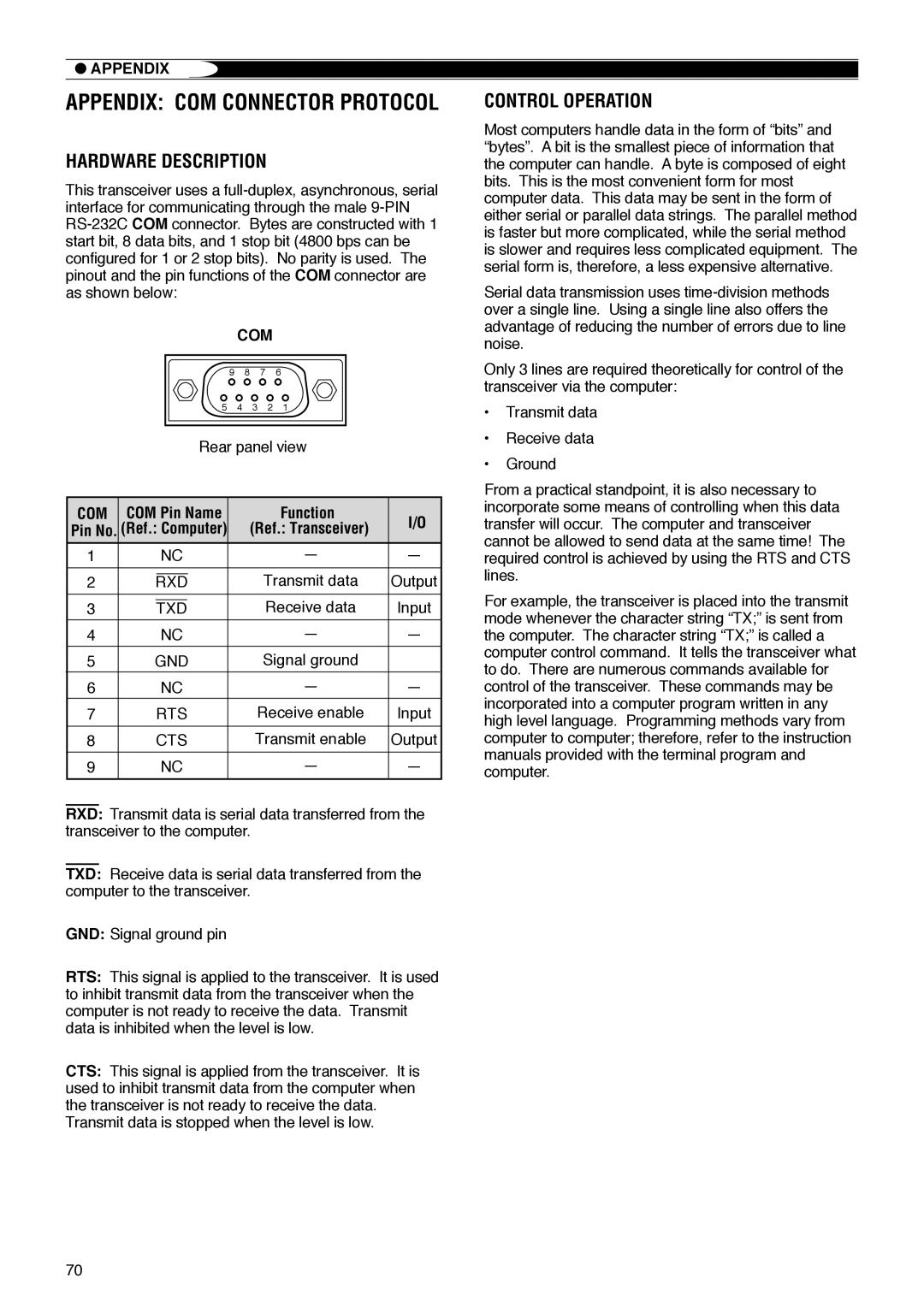
●APPENDIX
APPENDIX: COM CONNECTOR PROTOCOL
HARDWARE DESCRIPTION
This transceiver uses a
COM
9 |
| 8 | 7 | 6 |
5 | 4 | 3 | 2 | 1 |
Rear panel view
COM | COM Pin Name | Function | I/O | |||||
Pin No. | (Ref.: Computer) | (Ref.: Transceiver) | ||||||
| ||||||||
1 |
|
| NC | — | — | |||
|
|
|
|
|
|
|
| |
2 |
|
|
|
|
| Transmit data | Output | |
RXD | ||||||||
3 |
|
|
| Receive data | Input | |||
| TXD | |||||||
4 |
|
| NC | — | — | |||
|
|
|
|
|
|
|
| |
5 | GND | Signal ground |
| |||||
6 |
|
| NC | — | — | |||
7 |
| RTS | Receive enable | Input | ||||
|
|
|
|
|
|
|
| |
8 |
| CTS | Transmit enable | Output | ||||
|
|
|
|
|
|
|
| |
9 |
|
| NC | — | — | |||
|
|
|
|
|
|
|
| |
RXD: Transmit data is serial data transferred from the transceiver to the computer.
TXD: Receive data is serial data transferred from the computer to the transceiver.
CONTROL OPERATION
Most computers handle data in the form of “bits” and “bytes”. A bit is the smallest piece of information that the computer can handle. A byte is composed of eight bits. This is the most convenient form for most computer data. This data may be sent in the form of either serial or parallel data strings. The parallel method is faster but more complicated, while the serial method is slower and requires less complicated equipment. The serial form is, therefore, a less expensive alternative.
Serial data transmission uses
Only 3 lines are required theoretically for control of the transceiver via the computer:
•Transmit data
•Receive data
•Ground
From a practical standpoint, it is also necessary to incorporate some means of controlling when this data transfer will occur. The computer and transceiver cannot be allowed to send data at the same time! The required control is achieved by using the RTS and CTS lines.
For example, the transceiver is placed into the transmit mode whenever the character string “TX;” is sent from the computer. The character string “TX;” is called a computer control command. It tells the transceiver what to do. There are numerous commands available for control of the transceiver. These commands may be incorporated into a computer program written in any high level language. Programming methods vary from computer to computer; therefore, refer to the instruction manuals provided with the terminal program and computer.
GND: Signal ground pin
RTS: This signal is applied to the transceiver. It is used to inhibit transmit data from the transceiver when the computer is not ready to receive the data. Transmit data is inhibited when the level is low.
CTS: This signal is applied from the transceiver. It is used to inhibit transmit data from the computer when the transceiver is not ready to receive the data.
Transmit data is stopped when the level is low.
70
